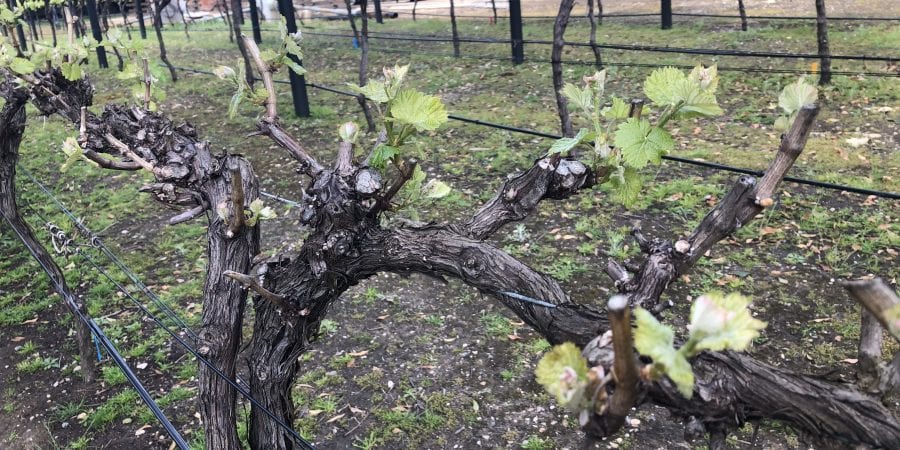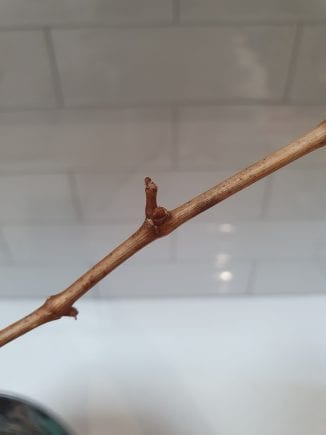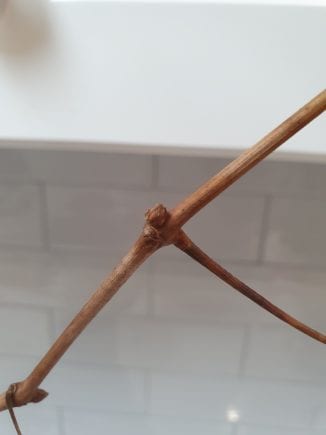I promise I have some interesting new content next week…
… I was planning on bringing it to you this week, but I’ve run out of time to do it justice!
Instead, I have been meaning to revisit this fascinating topic, so what better time than now?!
Last year I challenged myself to better understand a topic that I had never quite been able to get my head around.
I think I almost get it now!
Let’s see if I can explain it to you…(again!)!
Around nowish (some growers may have already done it, others may not have got there yet) is a great time to start assessing the viability of buds on the grapevine. (Don’t get too bogged down in that yet… I’ll explain further later.)
Growers do this every year… it helps them to decide how to prune the vines.
Some years are more important than others though. 2020 was a great example. In the aftermath of the devastating bushfires of 2019 it was important to check how this major stress affected the developing buds.
Buds
I think the thing that I struggled to get my head around the most is that the buds that will form THIS year’s growth (all the shoots, leaves and bunches for Vintage 2021) were formed during LAST year’s growing season.
Let me say that again…
When the grapevine grew all its bits and pieces (starting in Spring last year – let’s call that Year 1) it also grew all the bits and pieces it will need to start the process off again in Spring this year (Year 2). If you have a good enough microscope (and know what you’re looking for) you can also see tiny bunches in the buds! Amazing!
(and that isn’t actually quite right because the grapevine actually grew all the bits and pieces for Year 1 in the year before that! See why I get confused?!)
But while that’s all very clever and such, the problem is that any stressful events occurring in Year 1 will potentially affect what sort of crop you end up with in Year 2.
You can probably see where I’m going with this now…
The bushfires that rampaged through in December 2019 (smack bang in the middle of the growing season) was one heck of a big stress for the poor vines. Not only in that year, but also for the year after (if the vines survived at all).
Loving our blog? Sign up for weekly updates straight to your inbox…
 Bud formation
Bud formation
This is a huge topic and I could delve pretty deep and probably confuse you and me both, but I’m not going to do that.
All I’m going to say is that a bud forms (by the magic of nature!) at every node on a grapevine cane.
I ventured out into the backyard this morning to find this very sad looking grapevine to show you exactly what I mean…
That bit pointing up to the corner of the photo is called a cane. And all along the cane (spaced at regular intervals) are the nodes.
Here are some close-up photos of some nodes…
And that little bump at each of the nodes is the bud.
Bud dissection
Other than waiting for each bud to burst (or not) in Spring, the only way to tell if a bud is alive (or viable) is to cut it open and have a look. But of course, then that bud is no longer viable because you just killed it by cutting it open to have a look!
So the idea is to collect a representative sample of canes from the vine and across the vineyard to determine how much damage (if any) has been sustained.
Instead of risking the amputation of my own finger, I scoured youtube to find someone who already risked theirs to show you how this is done…
The sub-zero temperatures were obviously the stressor in this example, but the same principle applies to our bushfire affected vines.
Now what?
The representative sample is a pretty good indication of what is happening in the vines.
And this information is going to be super important when it comes time to make decisions about how to prune the vines.
Pruning is another one of those topics which I find hard to get my head around and I’m not going into that today. If you want to read up on it, check out this post where I try to make sense of it (with another video I “borrowed” from youtube).
As Jackie shows us in her video there are some generally accepted ranges that help growers decide how many nodes to leave on the cane. If the buds have been significantly damaged, then the idea is to get at least one of those buds to burst in spring.
And even if there hasn’t been a stressful event during the previous growing season (this season just gone for example), some growers like to use this method to figure out exactly how many nodes to leave when they prune their vines.
And pruning in the Adelaide Hills is well and truly underway (or complete). Feels like it won’t be long until we’re talking about budburst again and the beginning of the next growing season!
Somerled Club Room update!
Here are a couple of progress photos of our club room renovation (and the reason for all the noise coming from out the back!).
We’re so excited to see how it’s all coming together! It may not look like much now, but we promise you’re going to love it…





 Bud formation
Bud formation
